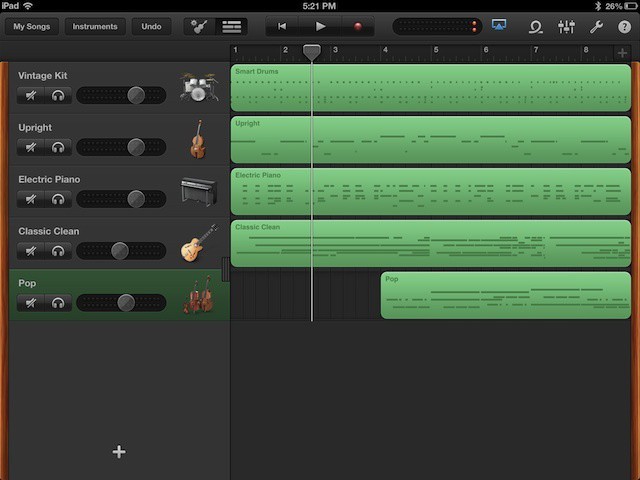Apple’s GarageBand makes it relatively easy to sketch out an audio demo, but it does have some severe, intentionally-crippled limitations. One of the biggest drawbacks is the lack of built-in support for exporting MIDI data.
You can connect real instruments, such as electric keyboards and guitars to your Mac for use in GarageBand. Using real instruments with GarageBand produces not only better sound, but realistic practice, as you finger the actual instrument and not an on-screen keyboard/string set.
- Sep 04, 2019 Knowing how to work with Regions in GarageBand, whether on Mac or iOS, is a key element of the app. These Regions are the base for your song and are flexible enough to be manipulated as you need them. Hopefully you find this tutorial and can check out our other GarageBand articles for help adding Apple Loops or using the metronome.
- Nov 07, 2010 Garageband Midi Tutorial If you've already got Logic - then ignore this. If you've only got Garageband and want to control a Midi Instrument, eg, a guitar effects pedal like the Pod X3 Live - then.
You can connect a real MIDI keyboard through a USB cable (on most newer gear) or a MIDI adapter (on older equipment). You can connect other MIDI instruments, including guitars, woodwinds, and drums, and record onto a real instrument track in GarageBand. Click the red Record button when you’re ready to rock. Move the playhead to just before where you want to start jamming.
MIDI is geek shorthand for Musical Instrument Digital Interface, a standard that has been around for years.
Logging and Analytics. Multi‐Channel Outputs. iTunes Store Compatible. Pro ragnarok download. Automatic or Manual Control. Superior Stability.
If the high-quality instrument you have in mind is your own singing voice, connect a microphone (in lieu of the Mac’s built-in microphone) to an audio input port on the computer.
Open System Preferences, click Sound, click Input, and then select Line In. Drag the Input volume slider to an appropriate level. Choose Vocals and the instrument that most closely matches your singing style, such as Epic Diva, Helium Breath, or Megaphone. Garage Band will tailor the effects to your voice.
Don’t worry if you don’t know how to characterize your singing voice; one of your other options is No Effects.
Good microphones are also useful when you’re recording podcasts. If you choose to use a microphone not for singing but for recording your speaking voice, set the option to No Effects (unless you’re going for a comedic effect).
To add the instrument to a recording, click the Create a New Track (+) button, choose Track→New Track, then select Real Instrument and click Create.

Midi Setup Garageband
Choose an input source (stereo or mono), depending on how the instrument is connected to the Mac. Select Monitor from the pop-up menu to be able to hear the instrument as you play it, with or without feedback.
Learn what’s new in GarageBand for iOS
Get free sound packs from the Sound Library, build grooves with the Beat Sequencer, share and store songs and audio files with the Files app, and more.
:max_bytes(150000):strip_icc()/GarageBandNewFile-5c001c3bc9e77c0026661b21.jpg)
Garageband Mac Midi Out Of Windows 10
Featured topics
Use Drummer Loops in GarageBand for Mac
Quickly add drums to your song using Drummer Loops, a type of Apple Loop that you can customize to fit your song.
Learn how to use Drummer Loops in GarageBandWork with percussionists in GarageBand for Mac
Use Drummer to add dynamic percussion parts to your song, available in three percussion styles—Latin, Pop, or Songwriter.
Add percussion to your GarageBand song using DrummerIf you can't record audio after a macOS Mojave update
After installing macOS Mojave on your Mac, you might not be able to record audio in Logic Pro X, MainStage, GarageBand, Final Cut Pro X, or third-party audio and video apps.
Learn what to do if you can't record audio after updating to macOS MojaveAbout GarageBand 6.0.5 compatibility in macOS
Learn about changes coming to macOS and how to update to GarageBand 10 for macOS.
Find out how to update to GarageBand 10 for macOSLearn more
Have a question? Ask everyone.
The members of our Apple Support Community can help answer your question. Or, if someone’s already asked, you can search for the best answer.
Ask about GarageBand for MacAsk about GarageBand for iOSTell us how we can help
Answer a few questions and we'll help you find a solution.
Get support